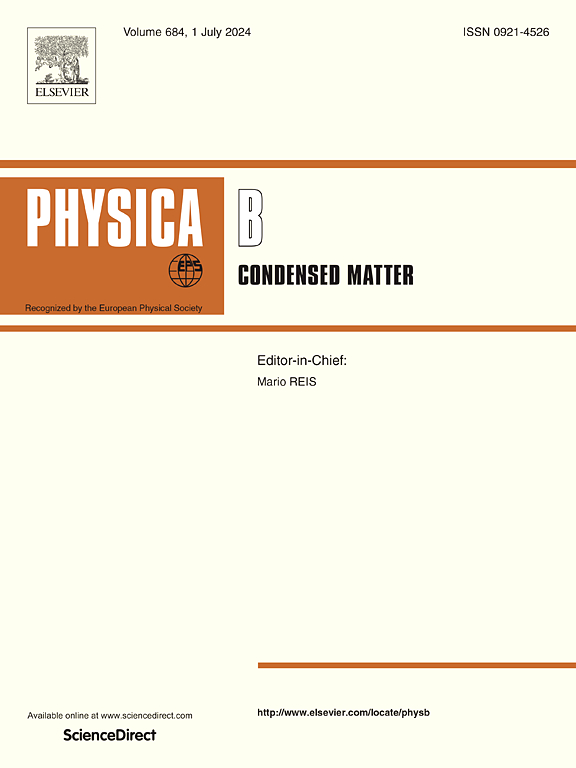La Y Zr对C7035铜合金高强高导电性的改性机理研究
IF 2.8
3区 物理与天体物理
Q2 PHYSICS, CONDENSED MATTER
引用次数: 0
摘要
为了研究多元素掺杂对铜合金机械导电性的影响,采用基于密度泛函理论的第一性原理计算和实验,在微观和宏观尺度上探索多元素掺杂对铜合金机械导电性提高的耦合机理。结果表明:影响铜合金强度和导电性的因素有:1)掺杂元素与Cu形成的络合相(LaCu6, YCu5, ZrCu5), 2)掺杂元素协同作用形成的络合相,3)掺杂引起的孪晶和位错结构。La元素形成的析出相具有片层结构,在损失部分强度的基础上提高了合金的韧性。由于析出相LaCu6具有较高的电导率,合金的电导率提高了23.8%。Zr形成的析出相尺寸适中。它不仅提高了合金的强度,而且提高了合金的导电性,电导率提高了19.2%。Y对增强强度有显著作用,但对电导率有负面影响,电导率至少下降24.5%。本文章由计算机程序翻译,如有差异,请以英文原文为准。
Study on the modification mechanism of La Y Zr on high strength and high conductivity of C7035 copper alloy
In order to study the effect of multi-element doping on the mechanical and electrical conductivity of copper alloys, first-principles calculations and experiments based on density functional theory were used to explore the coupling mechanism of multi-element doping on the improvement of mechanical and electrical conductivity of copper alloys at microscopic and macroscopic scales. The results show that the factors influencing the strength and electrical conductivity in copper alloys are as follows: 1) The complex phases (LaCu6, YCu5, ZrCu5) formed by doped elements and Cu, 2) the complex phases formed by the synergy of doped elements, and 3) the twin and dislocation structures induced by doping. The precipitated phase formed by La element has a lamellar structure, which improves the toughness of the alloy on the basis of losing part of the strength. Due to the high electrical conductivity of the precipitated phase LaCu6, the electrical conductivity of the alloy has increased by up to 23.8 %. The precipitated phase formed by Zr has a moderate size. It not only enhances the strength of the alloy but also improves the electrical conductivity, with the electrical conductivity increasing by up to 19.2 %. Y has a significant effect on enhancing the strength, but it has a negative impact on the electrical conductivity, with the electrical conductivity decreasing by at least 24.5 %.
求助全文
通过发布文献求助,成功后即可免费获取论文全文。
去求助
来源期刊

Physica B-condensed Matter
物理-物理:凝聚态物理
CiteScore
4.90
自引率
7.10%
发文量
703
审稿时长
44 days
期刊介绍:
Physica B: Condensed Matter comprises all condensed matter and material physics that involve theoretical, computational and experimental work.
Papers should contain further developments and a proper discussion on the physics of experimental or theoretical results in one of the following areas:
-Magnetism
-Materials physics
-Nanostructures and nanomaterials
-Optics and optical materials
-Quantum materials
-Semiconductors
-Strongly correlated systems
-Superconductivity
-Surfaces and interfaces
 求助内容:
求助内容: 应助结果提醒方式:
应助结果提醒方式:


